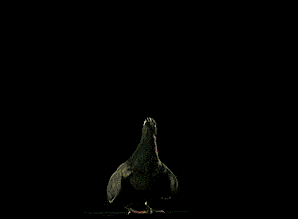Pterosaur Take-Off

This may not come as a shock to you, but pterosaurs are *not* birds. They both have wings, but they are structured very differently. They both fly, but with different mechanisms. They both evolved similar skeletal features, but through different bones. And they both evolved during the Mesozoic, but pterosaurs arrived on the scene first.
Pterosaurs are archosaurs, descendants of the ancestors of modern birds and crocodiles. They are closer to ancestry to dinosaurs both modern and extinct, but they do not possess the defining features of dinosaurs (features of the hip among others), and instead have their own defining characteristics.
Given their uniqueness, it is not surprising that paleontologists had struggled for a long time in trying to figure out how pterosaurs flew. People made and launched many models (computer and physical) to assess how the wing bones must have been held in order to provide lift.
But recently a new question arose. Pterosaurs were clearly able to fly, even the spectacularly large ones like Quetzalcoatlus. But how did they take off?

The standard bird take off never really fit. Birds are bipedal (they walk on 2 legs on the ground), and when they launch, they first crouch, then jump and spread their wings to achieve lift.

Pterosaurs were quadrupedal on the ground (walked on 4 legs), so the bird-crouch-launch didn’t really work. A new idea occurred. What if pterosaurs used their arms as a balance point, swung their bodies forward and then launched? It’s termed ‘quadrupedal launch’ and it’s hard to picture, so here’s an animation:

That seemed to make more sense given the layout of their bodies and the length of their arms. There’s also more to living bodies than just bones. We must account for other tissues like cartilage and muscle power to really understand if this process would have worked.
That’s where this new [study] comes in. The authors used a digital model of a pterosaur wing and hip to model different body positions. They tested 3 different amounts of cartilage based on what we find in birds and alligators. They also tested different amounts of muscle power. With these tissue amounts entered, they used the computer to test if different limb positions were possible, especially those relating to quadrupedal launch.
They found that quadrupedal launch was possible in the hip and shoulder with an alligator amount of cartilage, and a bird amount of muscle stretch. These same features allowed a bipedal launch as well in the shoulder, but none of their models allowed the bipedal launch in the hip until they shifted the bones outward an additional 10 degrees. I should note that they tested this in a medium (5m wingspan) pterosaur, not in one of the giant pterosaurs. The authors mention that this is a starting point, and that further tests need to be done to assess launch abilities in other pterosaurs.